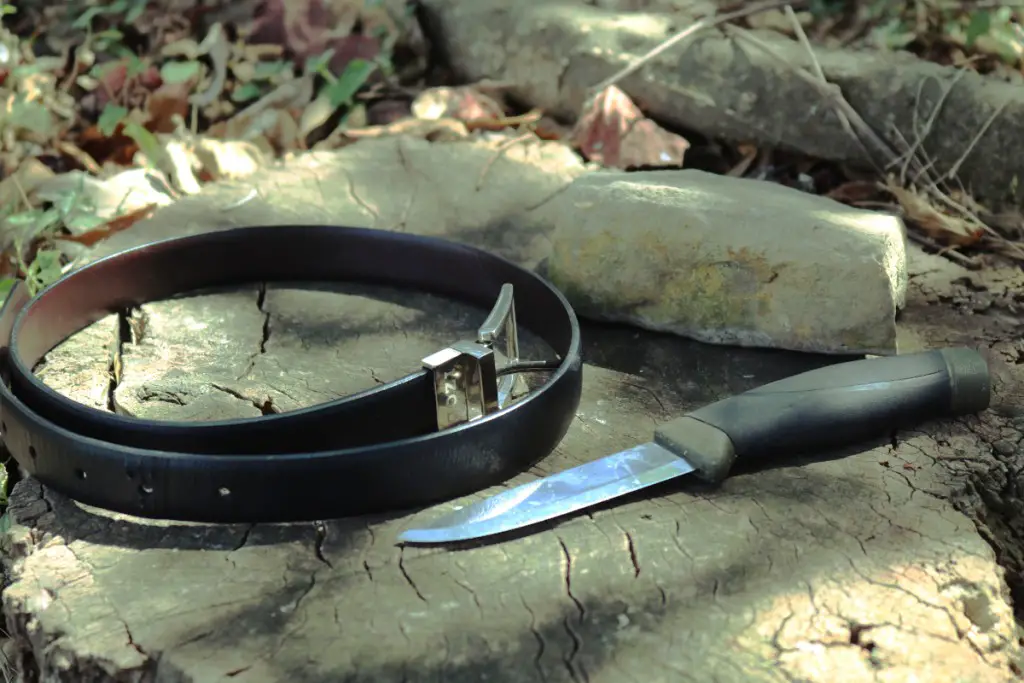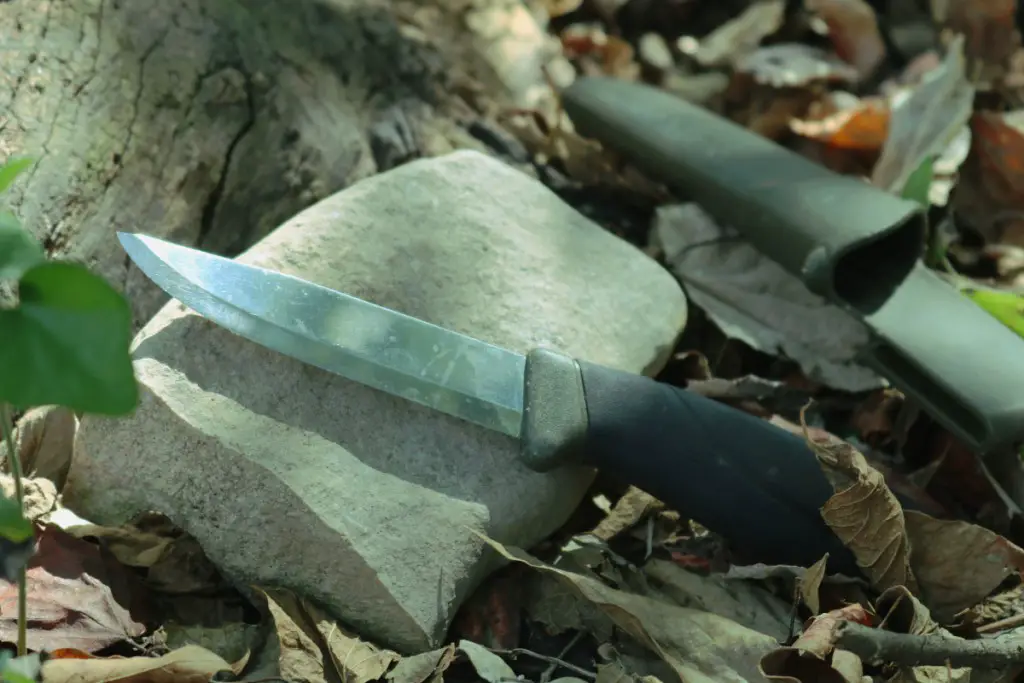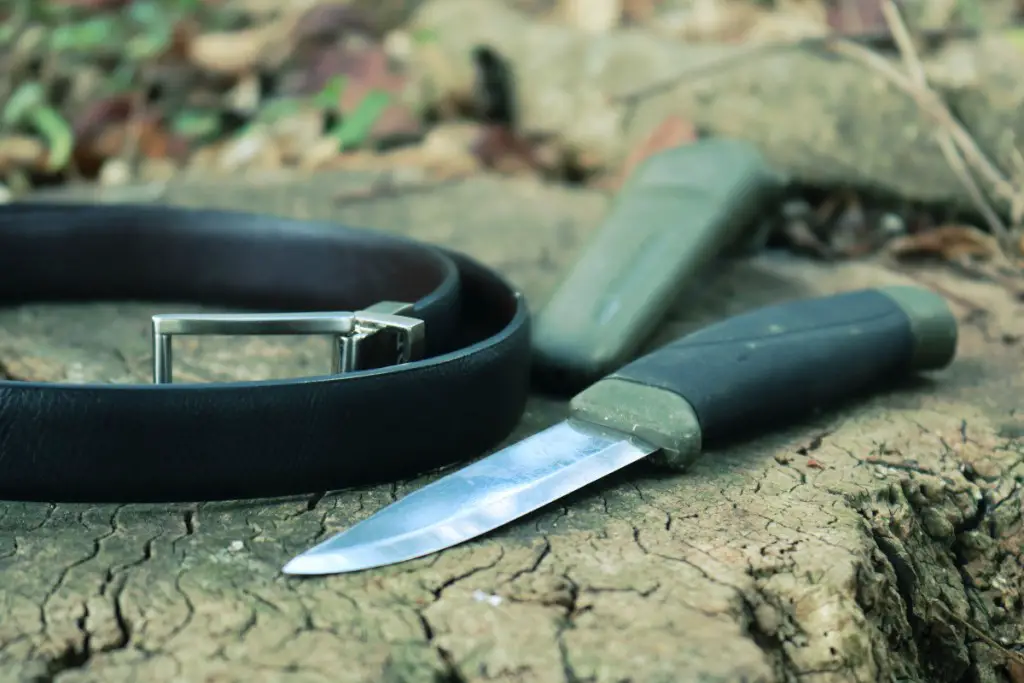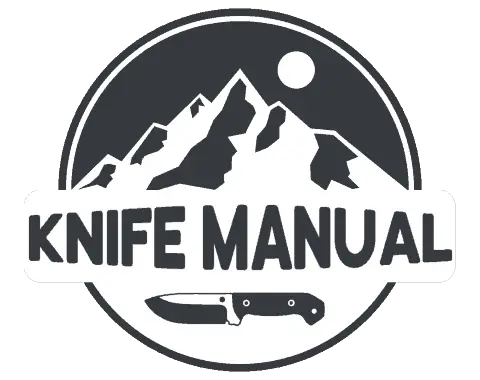
When you’re out in the wilderness with only a knife and the clothes on you back, it is important to know how to sharpen your knife so that it can continue to complete tasks with ease. Although this situation is not very likely to happen, at least to the average person, it is important to know how to sharpen your knife in the wilderness just in case of that freak chance that your stuck in this sort of situation.
There are two main techniques to sharpen a knife in the wilderness. Sharpening and stropping. Sharpening is used to sharpen the knife blade to the desired sharpness, while stropping is used to realign and buff out the blade on the microscopic level.
Below, I’ll go into a little more detail about the differences between them and the different scenarios you would use each one of them in. Then I’ll go over how to perform each sharpening process correctly.
Table of Contents
Sharpening vs. Stropping
The major difference between sharpening and stropping a knife is that sharpening actually grinds down the blade, while stropping reshapes a deformed blade. Let me explain.
When you use a knife to carve or cut something, the material is either harder or softer than the blade of the knife. If the material you are cutting is softer, over time your blade will start to deform on the microscopic level and will not cut as well. To solve this problem, stropping the knife blade reshapes and realigns the blade to solve the problem.
However, if the material you are cutting is tougher than your knife blade or if your knife is used very often on softer materials, your blade will lose its edge and become dull. The way to solve this problem is to sharpen and actually shave down the blade again into a sharp edge.
While they both have basically the same result of making a blade cut well again, they are very different processes that solve very different types of dull blades.
How to Determine if Your Knife Needs Sharpening, Stropping, or Both
It is very rare that a knife blade will only need sharpening. When a blade is sharpened, it is good practice to strop the blade afterward just so it is the sharpest that it can be. So we are really deciding whether you can get away with just stropping your knife blade, or if you have to do both processes to make it sharp again.
When you notice that your knife is not cutting as well as it used to, the first step to determine how you should make it sharp again is to see if the blade is visibly dull. If the cutting edge of the blade does not come to a razor-sharp edge, you most likely need to sharpen and then strop the bade.
If the blade looks sharp but continues to not cut very well, stropping the blade will probably fix it. However, if after stropping the blade it still doesn’t cut very well, you might consider sharpening it and then stropping it again.
Remember, it is very possible that if you are having trouble cutting through a material, it is not the knife’s fault. The material might be too tough for the knife blade or you might be using a bad technique. Check for other possible problems before jumping to sharpening or stropping your knife blade.
Sharpening a Blade
In order to properly sharpen a knife blade without modern tools or a whetstone, there are a few things you will need to find. The materials needed should be fairly easy to find in the woods or wherever you are. Sharpening a knife blade can be broken into a two-step process. First, you roughly grind the blade down into a sharp edge, then you hone it to make it razor sharp.
To sharpen a knife blade in the wilderness, you will need:
- A flat, fine-grained rock
- Water or oil

Grinding
Cover the flat part of the surface of the stone with either water or oil. Then, take the stone and begin rubbing your knife blade in small circles or long strokes on the flat surface of the rock. Try to keep your blade at a 15° angle to the stone’s surface. Do this to both sides of the cutting edge of your knife until the edge is symmetrical and is very sharp.
Honing
After you have ground the edge down, lightly run the blade over the stone ten to fifteen more times while still keeping the blade at a 15° angle to the stone. These last honing strokes should be as long as the stone will allow and very light. You’re just trying to get the last bits of the roughness out of the blade and make it super fine and sharp.
Stropping a Blade
Once you have determined that your knife only needs stropping or after you have sharpened your knife blade, its time to make it super sharp and reshape it on the microscopic level.
Materials needed for stropping a knife blade:
- A leather strip or belt
Leather is next to impossible to find just randomly in the wilderness, this is the reason that I often wear leather belts when I go out into the woods. But don’t lose hope if you’re stuck in the wilderness with no leather, it is very possible to sharpen your knife enough just by using a stone. It won’t be as sharp or precise but will last you until you get out of the situation and can properly sharpen and strop your knife.
If, however, you happen to have a leather belt on you in the wilderness, take it and tighten it around a small tree or rock. Hold the longer end of the belt straight out away from the tree in your non-dominant hand. Next, take your knife in your other hand and lightly run the cutting edge of the blade up and down the belt.
Be sure to not put too much pressure on the knife when you strop it. Use the weight of the blade and just run it along the leather belt. After about twenty strokes in each direction, your knife should be pretty sharp and ready for action again.

Be Prepared for the Worst
A major part of keeping a knife functional is sharpening it often. This means when you’re at home you should sharpen your knife so that when you are in the wilderness, you won’t get caught out there with a dull knife. Also, keeping your knife blade clean and free of rust is very important. Check out how to remove rust from a carbon steel knife blade in this article.
It is also very important to go out in the wilderness prepared for the worst. Just in case, always wear a leather belt and have a small bottle of oil in your bag. It’s a very small detail but could save your life. A dull knife is basically useless to you in a survival situation.
So go out and have some fun in the woods; just do so with the right equipment and knowledge. And remember, a knife is an invaluable tool that can save you when you’re out in the wilderness. Take the small precautions before the disaster so that you survive the disaster.


